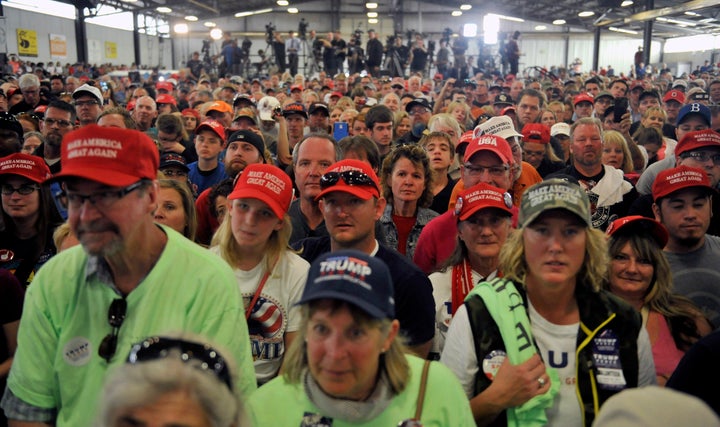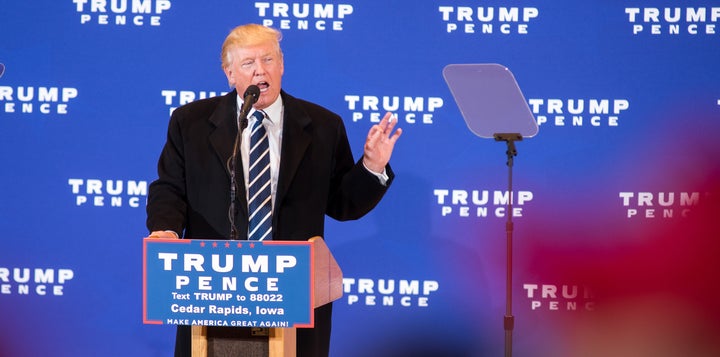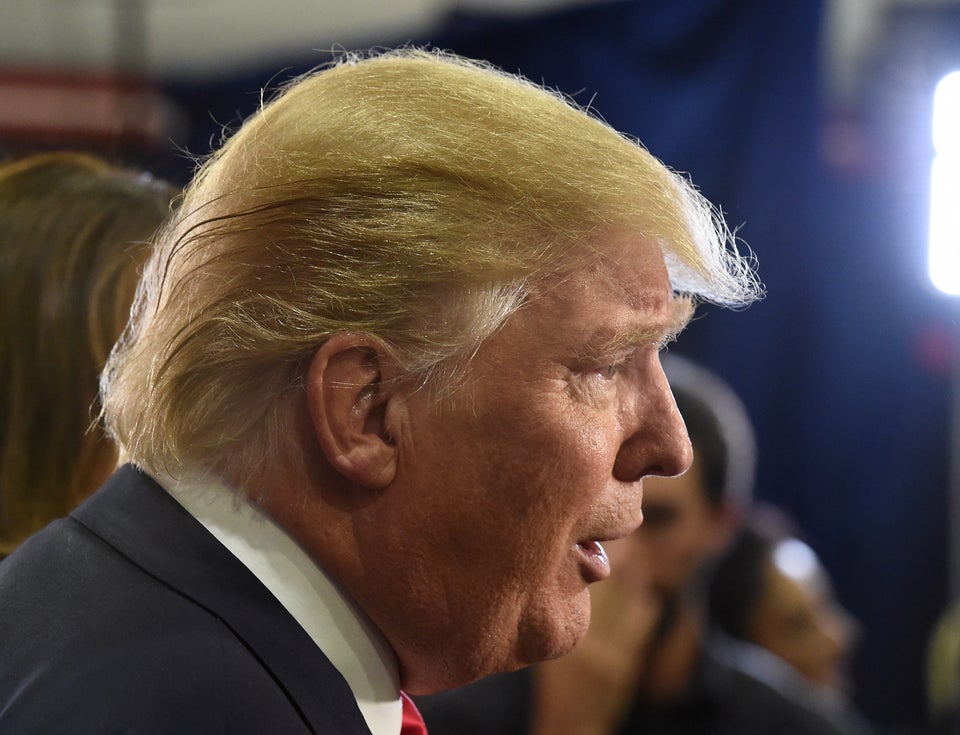
For the past 20 years, I’ve been writing about American workers, and I confess considerable surprise that so many blue-collar workers have rallied behind Donald Trump.
The nation’s blue-collar workers are often skeptical and scoffing, frequently deriding corporate CEOs and politicians alike. But now this group has embraced Trump as some type of savior who they believe will use his bull-in-a-china-shop style and business know-how to fix the broken system and lift America’s workers. Struggling blue-collar workers often voice disdain for billionaires, but millions of them have embraced Trump—maybe because they like his macho personality, his shock jock rhetoric and his defiant challenge to a system that they feel has been rigged against them.
With wages stuck in a rut much of the past decade, with thousands of factories shuttered and with Washington gridlocked on issue after issue, it’s understandable that many workers would embrace a brash outsider. Trump has wooed and wowed white working-class voters by shrewdly focusing on two issues that anger them: trade and immigration. Trump repeatedly bashes Mexico, China and immigrants, pledging to overhaul our trade agreements and to deport 11 million undocumented immigrants who he says have stolen American jobs.
When one digs beneath Trump’s rhetoric, however, it’s not at all clear how or whether his ideas would lift American workers. Indeed, many economists warn that Trump’s get-tough trade policies could spark both a trade war and a recession that would batter millions of the workers who support him.
“Trump talks as if it’s all simple, as if he has all the answers.”
So let’s drill down and examine what Trump’s policies would mean for workers. On one of the most important issues for workers – raising wages – Trump offers no coherent policy. One day he says wages are too high; another day he signals he might support a federal minimum wage increase, but maybe not. Trump dislikes labor unions and hasn’t proposed anything to strengthen collective bargaining, which economic studies show can be an important tool to making sure that corporations share their profits and raise wages. Indeed, Trump’s hotel in Las Vegas is refusing to bargain with the labor union that represents that hotel’s workers. And notwithstanding Trump’s invective against undocumented immigrants, not only did he employ undocumented workers to do the demolition work for his signature Trump Tower in Manhattan, but he cheated many of them on wages.
Trump vows to cut taxes for American workers, but his proposals would actually raise taxes for millions of middle-class Americans, while disproportionately reducing levies on the rich and real estate developers like himself. Trump would do the bidding of the wealthy by abolishing the estate tax and cutting the corporate income tax – all part of a plan that would reduce federal revenues by at least $5 trillion over ten years, leaving less money to expand pro-worker programs like job training, aid to education and the Earned Income Tax Credit.
Trump has bucked the GOP establishment by opposing cuts in Social Security and Medicare benefits. That’s good news for workers, millions of whom have been too financially stretched to save adequately for retirement. Many face their “golden years” with just $20,000 or so a year in Social Security benefits. On infrastructure, Trump has echoed Hillary Clinton in calling for spending hundreds of billions of dollars on roads, bridges, railroads and airports. That would help workers by creating hundreds of thousands of middle-class jobs while improving economic efficiency and productivity, but the problem is, Trump ― having proposed more than $5 trillion in tax cuts ― hasn’t put forward a credible plan to finance his infrastructure spending.
Trump’s No. 1 issue has of course been immigration, headlined by his promise to expel 11 million people. His supporters love this idea, convinced that undocumented workers are a drain on the public fiscally (even though they usually pay taxes). Deporting 11 million immigrants would be a shock to the system; it would devastate many communities and reduce consumer demand – at car dealers, appliance stores, supermarkets – crimping economic growth.
Many businesses that rely on unauthorized immigrants ― meat-packing plants, fruit and vegetable growers, furniture factories, car washes ― might lose a large swath of their workforce, and their production might thus decline. Some might have to close, hurting G.D.P. growth and rendering Trump’s improbable promise of achieving 4 percent-a-year growth all the more implausible. Moreover, Americans might soon have to pay more for some goods and services, whether meat, fruit or having their car washed. No doubt many companies would seek to hire American workers to replace those deported, but how many Americans are eager to work in car washes or pick tomatoes for $9 an hour or do dangerous construction work or toil in slaughterhouses for $12 an hour? Maybe car washes and farmers would raise wages to $10 or $11 an hour, but that still might not attract enough American workers. Bottom line, Trump’s deportation plan may hurt American workers more than it helps.

On trade, Trump has promised to get Mexico, China and other countries to renegotiate trade deals. He has also threatened to slap a 45 percent tariff on Chinese goods and 35 percent on cars assembled in Mexico. Any freshman economics student will immediately see problems with this. These tariffs would force Americans to pay more for imported TVs, mobile phones, toys and cars. And if a Trump administration slaps steep tariffs on China and Mexico, those countries are likely to retaliate, imposing penalty tariffs on U.S. products, perhaps on soybeans or machinery. That would hurt our factories, farmers and workers in Iowa, Ohio, Wisconsin and other states. That’s how ugly trade wars start, and that’s one reason Moody’s Analytics predicted that a Trump presidency could cause a recession with 3.5 million jobs lost.
The two major trade deals approved during Bill Clinton’s presidency ― the North American Free Trade Agreement (negotiated by George H.W. Bush) and Permanent Normalized Trade Relations with China – unfortunately accelerated the exodus of factory jobs. Many Trump supporters are angry at Hillary Clinton because of her husband’s support for trade deals that hurt many American workers, although don’t forget that Republican lawmakers in general supported these deals more than Democratic lawmakers did.
It is far from clear that Trump’s pledge to renegotiate these deals will bring back many jobs. Because of far lower wages in Mexico and China, American companies were moving jobs and factories to those countries even before Congress approved NAFTA and normalized trade with China. Those two measures opened the floodgates for American multinationals to send more production offshore because they created far stronger protections for companies that invested in factories in Mexico and China. Whatever a President Trump does to “fix” our trade deals, it’s still dubious that many factory jobs will pour back into the U.S., considering that American manufacturing wages average $26 an hour, compared with $2 or $3 an hour in China and Mexico. As much as we might hope otherwise, many manufacturers will continue to make their telephones, televisions, toys and garments in China instead of the U.S.
To add jobs, the next president ― whether Donald Trump or Hillary Clinton ― will need to do five things: pursue robustly pro-growth policies, promote innovation, produce a better educated, better trained workforce, modernize our decaying, efficiency-killing infrastructure and persuade or pressure American companies to add new jobs and operations here, rather than over there.
Trump talks as if it’s all simple, as if he has all the answers, as if he’ll bring back all the jobs, and evidently many workers lap up what he says. But the truth is, there is no miracle policy for creating or bringing back millions of jobs. It’s a long slog that will take innovation, investment, smart policy and hard work, lots of it.

